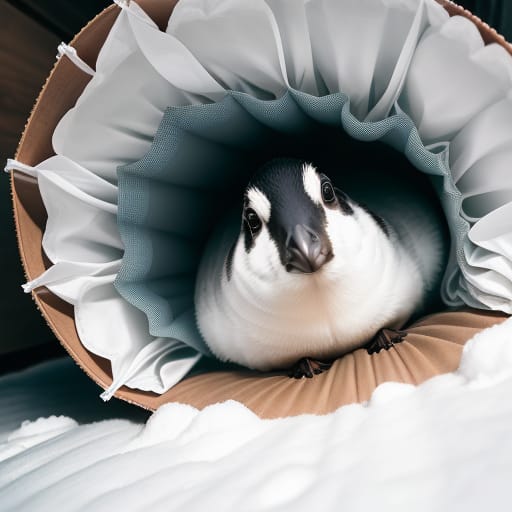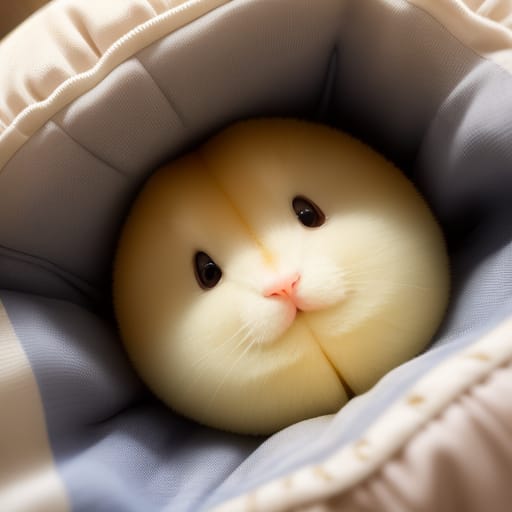Have you ever wondered what makes a down comforter so warm, fluffy, and comfortable? As you shop for a down comforter, knowing the details about down fill power, fabric shells, and construction methods can help you choose the perfect one to keep you cozy all night long.
This comprehensive guide breaks down everything you need to know about what materials and components make up down comforters. We’ll explore the different types of down fills, shell fabrics, construction techniques, sizes, care requirements and more. You’ll learn insider tips for picking the best down comforter along with top rated options for your budget.
What is a Down Comforter?
A down comforter is a bedding accessory filled with the fine, fluffy clusters and plumules that come from ducks and geese. This down fill is padded with stitched compartments, wrapped in a decorative fabric shell, and sewn together to create a lightweight, breathable blanket that keeps sleepers warm.
Unlike regular blankets which simply lay on top of you, down comforters are designed to gently trap body heat. The lofty fill creates clusters of air pockets that provide insulation. This allows the sleeper’s warmth circulate under the comforter instead of dissipating into the air.
Down Comforter Fill Power and Materials
The fill power indicates the quality and warmth of the down inside your comforter. Higher fill powers mean larger, fluffier down clusters that trap more air and provide better insulation with less weight.
Fill power ranges from 300 to 900. Most quality comforters have fill powers between 600 to 800. Here’s what you need to know about fill materials:
Types of Down Fill
Goose down generally has better fill power than duck down. Geese clusters tend to be larger and fluffier, trapping more body heat energy. However, duck down is also very good at providing warmth at lower price points.
European down sourced from European geese tends to be higher quality than Chinese or other Asian down. However, some manufacturers use proprietary cleaning methods produce high grade Asian down.
For budget buyers, alternative down like PrimaLoft is an affordable synthetic option that mimics properties of natural down. Soft, siliconized fibers trap heat effectively.
Down Fill Power Ratings
- Under 600 – Best suited for warmer climates
- 600-699 – Provides moderate warmth for 4 season usage
- 700-799 – Ideal for year-round comfort in colder regions
- Over 800 – Ultimate warmth for frigid environments
Along with fill power, the ratio of down to feathers impacts warmth. True down comforters have at least 70% down blended with 30% feathers. Higher down % means better heat retention.
Down Comforter Shell Fabric
While the interior down does most of the insulating work, the outer fabric shell also affects the comforter’s durability, breathability and ease of maintenance.
Popular shells include:
- Egyptian Cotton – Soft, breathable, resilient and easy to clean
- Pima Cotton – Strong, smooth premium cotton grown in SW USA
- Sateen Cotton – Lightweight fabric with luxurious sheen
- Percale Cotton – Crisp, matte finish cotton ideal for warm climates
- Microfiber – Lightweight synthetic known for softness
Quality down comforters typically have sufficiently high thread counts between 300 to 500. Higher thread counts indicate more finely woven material less likely to leak feathers.

How Down Comforters Are Constructed
Beyond the filling and shell fabric, technique used for assembling and stitching the comforter impacts durability and preventing leaks.
Quilting methods tie interior fabric layers together to minimize shifting:
- Sewn-through box stitching – Prevents leakage better but less loft
- Baffle box design – Allows maximum loft and insulation
- Gusseted walls – Allows down to fully expand for warmth
Edge finishing like piping and stitching boost structure:
- Double piping – Decorative accent stitching sealing in fill
- Knife edge – Clean tailored look without piping
Quality craftsmanship ensures your comforter remains durable and beautiful for years.
Benefits of Down Comforters
Why choose down over regular blankets or quilts? Here are some excellent benefits down provides:
Ultra Soft & Snuggly Feel
Goose or duck clusters have a plush, billowy texture creating a pleasant weight that cocoons you to sleep. The feathery-light material is also highly compressible. This allows the fill to mold to the contours of your body shape for ergonomic cushioning.
Highly Effective Insulation
The inclusion of tiny air pockets within fluffy down makes it one of the best natural insulators, trapping body heat better than other materials. Lofty fill rated 600-fill and above provides sufficient warmth for year-round usage.
Increased Durability
While down requires gentle care, quality down comforters often last over 10 years with proper maintenance. Premium shell fabrics and reinforced stitching prevent interior feathers from leaking out due to damage. This allows long-lasting wear over time.
Promotes Deep Sleep
The enveloping warmth and soft support assists the body in deeply relaxing during slumber. Studies show the right level of insulation helps trigger enhanced melatonin release for better sleep regulation.
How To Choose the Right Down Comforter By Size
One important factor that ensures coziness is getting the correctly sized down comforter for your bed. Here are typical sizing dimensions to allow sufficient overhang:
| Bed Size | Comforter Size |
|---|---|
| Twin/Single | 68″ x 86″+ |
| Double/Full | 72″ x 86″+ |
| Queen | 90″ x 98″+ |
| King | 108″ x 98″+ |
| California King | 108″ x 102″+ |
Add 4-6 inches minimum for overhang on all sides. Personal preference for more generous drape allows up to 12 inches overhang.

Cleaning and Caring For a Down Comforter
To keep duck/goose down clusters fluffy and maximize lifespan, special care is required:
- Dry clean comforters every 2 years to dissolve oil and dirt buildup
- Between dry cleaning, air out and spot clean stains with mild detergent
- Avoid washing machines which can damage stitching and down proofing
- Line dry outdoors instead of machine drying to prevent clumping
With proper maintenance, quality down comforters can last over a decade before needing replacement!
Hopefully this guide has helped shed light on what makes up the composition of down comforters from the insulating fill materials to woven shell fabrics and integrated construction techniques.
Frequently Asked Questions
What is the best down comforter fill power?
The fill power indicates the fluffiness and warmth of the down inside your comforter. Most quality comforters range from 600 to 800 fill power. For year-round use, 700-799 fill provides ideal warmth for colder climates without being overly hot. Over 800 fill power delivers ultimate insulation for frigid environments.
What fabric is best for a down comforter?
Look for shell fabrics with tightly woven thread counts between 300-500 for optimal breathability and durability. Most down comforters feature cotton shells like Egyptian Cotton or Pima Cotton which have a smooth, premium feel. Sateen Cotton has a luxurious sheen while crisp Percale Cotton works well for warm sleepers.
How do I wash a down comforter at home?
It’s best to dry clean down comforters every 2 years to deeply clean out oils and dirt trapped in down clusters. This helps revive fluffiness and insulation. In between, air out and spot clean stains gently with a mild detergent if needed. Avoid frequent machine washing and drying which can damage stitching and clump fill.
What is a baffle box down comforter?
A baffle box design has inner fabric walls that secure fill in separate compartments preventing shifting. This allows maximum loft while keeping the comforter lightweight. Baffles allow down to fully expand for better insulation compared to sewn-through stitching. Box baffle construction is highest quality.
Should I get a down or down alternative comforter?
Goose or duck down provides unbeatable softness, breathability and insulation properties that synthetic alternatives can’t completely mimic. However, down alternative comforters with fill like PrimaLoft are much more affordable, hypoallergenic and easier to care for. Consider your budget, climate needs and cleaning capabilities when deciding between natural vs synthetic fill.








